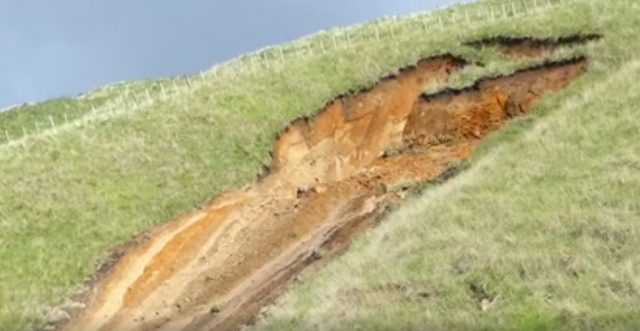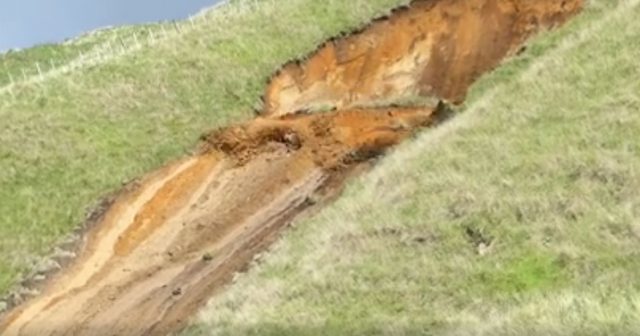9 April 2017
Papamoa: a brilliant video illustrating the mobility of landslides
Posted by Dave Petley
Papamoa: a brilliant video illustrating the mobility of landslides
One of the hardest things to explain about landslides is the ways in which changes in the structure of soils can cause dramatic reductions of strength, and thus increases in mobility. A brilliant video has been posted to Facebook by Emma Kapua that illustrates this point as never before, I think. This landslide occurred in the Papamoa Hills of New Zealand, one of many landslides triggered by the remnants of Tropical Cyclone Debbie as it passed over the country last week:
.
You will see that this starts as a classic, small rotational failure. It is clearly formed from intact soil at this point:-

Papamoa: the early phase of the landslide caught on video by Emma Kapua and posted to Facebook.
.
As the landslide goes around the circular shear surface it fragments rapidly, and changes phase:-

The fluidisation of the Papamoa landslide, as caught on video by Emma Kapua and uploaded to Facebook
Thereafter the landslide behaves as a fluidised mass, and thus accelerates rapidly down the steep part of the slope:-

The final phase of the Papamoa landslide, as captured by Emma Kapua and posted to Facebook
.
Understanding the processes that allow some soils to respond in this way has been a key aspect of landslide research, and of course it is essential to appreciate these mechanisms if the likely impact of future landslides is to be determined. It is the failure to understand that landslides can show this behaviour that can lead to an under-appreciation of the hazard that some landslides can pose. Clearly once a slide is moving in this way then the destructive potential is very high.


 Dave Petley is the Vice-Chancellor of the University of Hull in the United Kingdom. His blog provides commentary and analysis of landslide events occurring worldwide, including the landslides themselves, latest research, and conferences and meetings.
Dave Petley is the Vice-Chancellor of the University of Hull in the United Kingdom. His blog provides commentary and analysis of landslide events occurring worldwide, including the landslides themselves, latest research, and conferences and meetings.
That. Is incredible. I might put it in as one of my final exam questions this term.
B
a recent video of a impressive landslide in india : https://www.youtube.com/watch?v=mKDPOORlI8c
I am always curious as to whether 1) the soil is contractive and liquefies during shearing, or 2) there is a source of groundwater near the base of the sliding plane that causes piping and saturates the soil during shearing. I am sure there are cases for each, but knowing which is the bad actor would inform what mitigation is appropriate for a given slope. I have done work for Case 2 in the recent past and it was a relatively expensive undertaking mitigating future slope instability.
[interesting point. I suspect that both may often be the case. In this video the soil appears to be contractive during shearing, as indicated by the rapid phase change, but I suspect that a large amount of water has entered the soil too. This does show how important it is to understand the likely behaviour of the materials that form the landslide, as Oso showed so dramatically. D.]